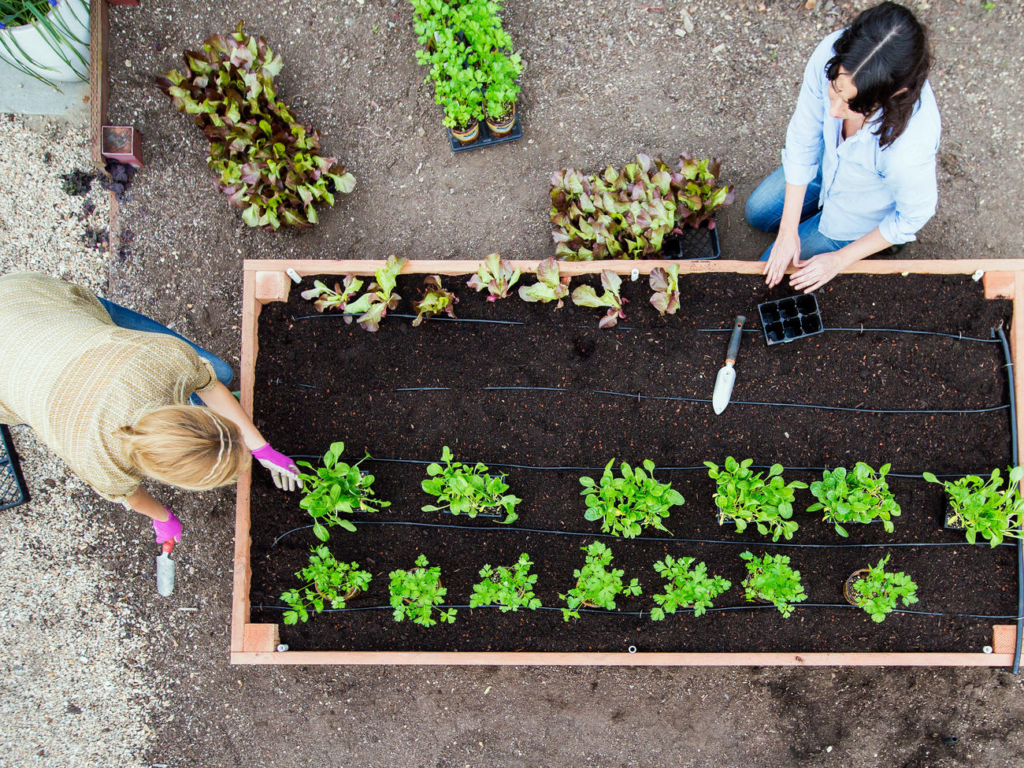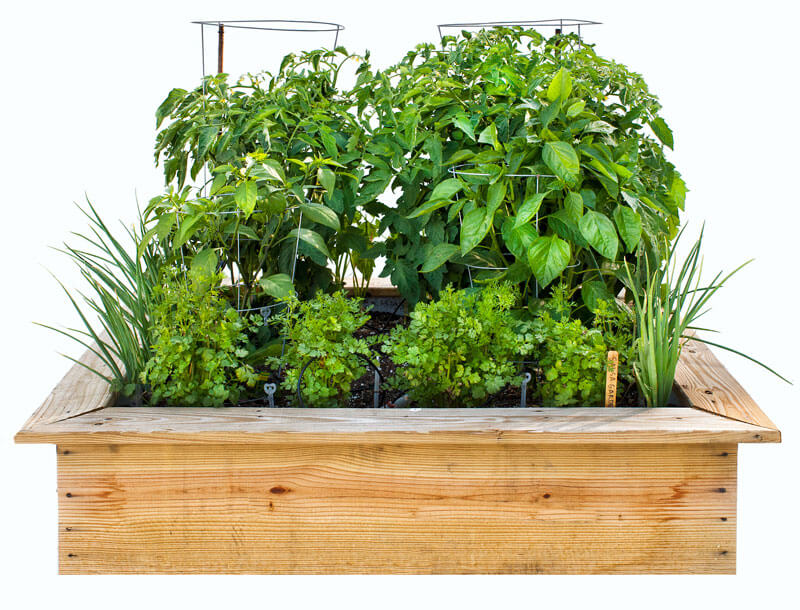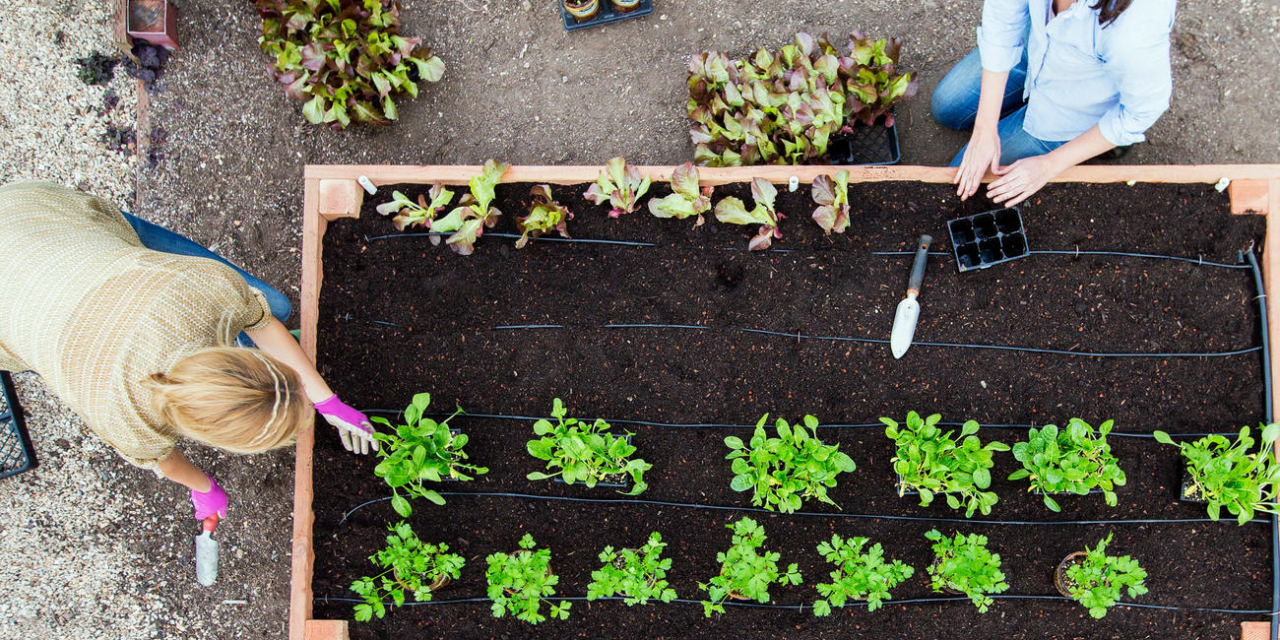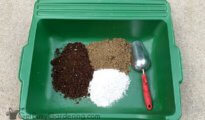Gardening is a great way to spend time outdoors and grow your own fresh produce. One of the most popular methods of gardening is by using raised garden beds. Raised garden beds are great because they allow you to control the soil quality, drainage, and even the height of the bed. They also make gardening easier on your back and knees by eliminating the need to bend over or kneel down to tend to your plants. In this blog post, we will guide you through the steps of building your own raised garden bed.

Step 1: Choose the location for your raised garden bed
The first step to building a raised garden bed is to choose the location. Consider factors such as sunlight, water access, and proximity to your home. Choose a location that receives at least six hours of sunlight per day and is close enough to a water source to make watering your plants easy.
Step 2: Gather materials
The next step is to gather materials. You will need wood for the frame, soil, compost, and any other materials you want to add to the soil to improve its quality. You can use any type of wood for the frame, but cedar and redwood are popular choices because they are naturally resistant to rot and insects.
Step 3: Build the frame
Once you have your materials, it’s time to build the frame. Cut your wood to the desired size and use screws or nails to attach the corners together. You can make your raised garden bed as large or as small as you want, but make sure it’s at least 6 inches deep to allow for proper root growth.
Step 4: Add soil and compost
After you have built the frame, it’s time to add soil and compost. Mix the soil and compost together in a wheelbarrow or other large container before adding it to the raised garden bed. This will ensure that the nutrients are evenly distributed throughout the soil.
Step 5: Plant your garden
Once you have added the soil and compost, it’s time to plant your garden. Choose plants that are appropriate for your climate and the amount of sunlight your garden receives. You can plant directly in the soil or use containers to make it easier to move plants around as needed.
Step 6: Maintain your garden
After you have planted your garden, it’s important to maintain it. Water your plants regularly, and add more compost or other soil amendments as needed to keep the soil healthy. Keep an eye out for pests and diseases, and treat them promptly to prevent them from spreading to other plants.
Building your own raised garden bed is a great way to get started with gardening. Not only does it make gardening easier on your back and knees, but it also allows you to control the soil quality and drainage. Additionally, raised garden beds can extend your growing season by keeping the soil warmer than ground-level soil.
There are a few additional tips to keep in mind when building your raised garden bed. First, make sure to choose untreated wood for the frame. Treated wood can contain harmful chemicals that can leach into your soil and affect the quality of your plants. Also, make sure to leave enough space between the bed and any nearby structures, such as fences or walls, to allow for proper air circulation.
When choosing plants for your raised garden bed, consider companion planting. Companion planting is the practice of planting certain plants together that benefit each other. For example, planting marigolds with your vegetables can help repel pests. Additionally, consider planting some herbs in your garden bed, such as basil or mint, which can help improve the flavor of your vegetables and deter pests.
The Benefits of a Raised Garden Bed

- Better soil quality: Because you fill a raised garden bed with high-quality soil, you have more control over the soil quality than you would with an in-ground garden. This means you can create a soil mix that is ideal for the plants you want to grow, rather than having to work with whatever soil happens to be in your yard.
- Better drainage: Raised garden beds have better drainage than in-ground gardens, which can help prevent waterlogging and root rot. This is especially important if you live in an area with heavy rainfall.
- Better pest control: Raised garden beds can be more easily protected from pests like slugs and snails. You can add a barrier around the edge of your raised bed, such as copper tape or diatomaceous earth, to help keep pests out.
- Easier maintenance: Raised garden beds are easier to maintain because they are raised off the ground, which makes them easier to access for watering, weeding, and harvesting. Additionally, because you control the soil quality, you may have fewer weed problems.
- Longer growing season: Raised garden beds can extend your growing season by warming the soil more quickly in the spring and keeping it warmer in the fall. This can be especially helpful in areas with short growing seasons.
- More accessible: Raised garden beds are also more accessible for people with physical limitations or disabilities, as they can be built to a comfortable height.
Overall, raised garden beds offer many benefits over in-ground gardening, including better soil quality, improved drainage, easier maintenance, and better pest control. They are a great option for both experienced and novice gardeners alike.
Finally, make sure to properly maintain your raised garden bed. This includes regular watering, fertilizing, and pruning as needed. You should also regularly check your plants for signs of pests or disease and treat them promptly to prevent them from spreading to other plants.
In conclusion, building your own raised garden bed can be a fun and rewarding project that can provide you with fresh, healthy produce all season long. By following these steps and tips, you can create a garden that will thrive and provide you with a bountiful harvest. Happy gardening!



















